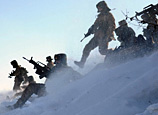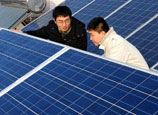
Key Words: Asia-Pacific situation; US; Japan-U.S. ties; China-U.S. ties; North Korea–South Korea relations;Cold War
Realted Reading:
>>More "positive energy" for China-U.S. partnership: Xi
>> Obama nominates U.S. defense, CIA chiefs
>>U.S. Pentagon prepares for possible automatic cuts
>>U.S. Pentagon greets visiting Afghan president
The world's attention has long been focused on the Asia-Pacific situation. The increasingly sensitive and complex bilateral and multilateral relations in the region, including China-Japan, China-U.S., Japan-U.S., China-Japan-U.S., and North Korea–South Korea relations, have made the Asia-Pacific situation subtler. How should we view the current Asia-Pacific situation?
World's geopolitical center of gravity shifting to Asia-Pacific region
The world's geopolitical center of gravity had long been in Europe and North America in the modern era. The United States has shifted its strategic focus to the Asia-Pacific region since the beginning of the second decade of the 21st century. It has taken China as a major rival for global hegemony because China is the only country that can compete against it in all fields after the collapse of the Soviet Union.
Gains and losses in the Asia-Pacific region are important for the development prospects and international status of China, the United States, and many other countries. As the Asia-Pacific situation gradually unfolds, the world's geopolitical center of gravity will shift from Europe and North America to this region at a faster pace.
The United States considers the Asia-Pacific region as its main geopolitical battlefield to contain China. It is sparing no effort to create a new Cold War geopolitical landscape in the region. In addition to further enhancing military ties with traditional allies, its effort has also shown some new characteristics. The first characteristic is forming a largest possible alliance against China.
The second characteristic is creating a U.S.-centered cobweb-like strategic structure.
The third characteristic is strengthening forward deployment and expanding strategic depth. For example, the United States has promoted Japan’s military buildup, deployed littoral combat ships in Singapore, used Subic Bay in the Philippines as its naval base again, and strengthened forward deployment in East Asia.

















 China's social trust index declined further last year, according to the Annual Report on Social Mentality of China 2012
China's social trust index declined further last year, according to the Annual Report on Social Mentality of China 2012


![]()
